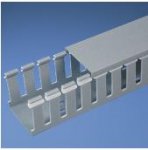- Occupation
- Licensed Electrician
That's the way I see it.and, truth be told, conductor fill has nothing to do with heat in a conduit...
current flow does.... so, the connected load to the conductors in a conduit
would make a lot more sense, but be harder to implement in the field...

